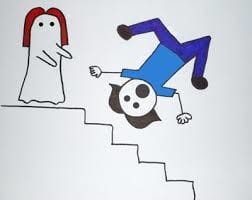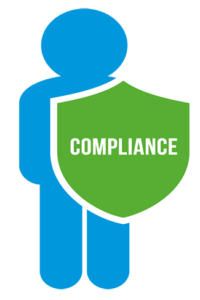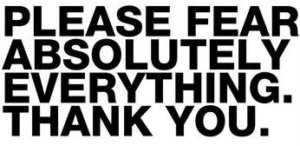In this article I share what to look for when you hire a new Contact Centre Manager.
Our scenario – you need to hire a new Contact Centre Manager
Let’s say you’re the new Chief Customer Officer and you need to hire a new inbound Contact Centre Manager for your existing 200 seat Centre. You’ve been given a mandate to implement a CX strategy and you have a small CX Team at hand.
You don’t come from the Contact Centre industry yourself. But as a CX professional you understand the value of the Contact Centre.
Your overall business is in good financial shape though the Centre has been somewhat neglected for the past few years. And tech-wise the Centre has the basic building blocks though there’s room for improvement.
You’ve learned from past experience that the number of years of experience held by the Contact Centre Manager doesn’t correlate to mastery of the job role. You need someone who ‘knows’ the Contact Centre – not just someone who has spent a lot of time in one.
So the essential question is this – what do you look for when you hire a new Contact Centre Manager?
The key domains of know-how required
The job of a Contact Centre Manager is a rich and full one. And that’s because there’s a lot to know to succeed.
I recommend the following key domains of know-how when looking to hire a new Contact Centre Manager. Or when you’re looking to upskill a current Manager or Management Team.
1. Operations & Technology
Includes Centre design, forecasting the workload, calculating staff and resource requirements, selecting the right metrics and ways to measure those metrics, understanding the interrelationships between metrics, understanding the underlying dynamics of the Centre, channel management and the ability to articulate the impact of business decisions on the operation.
In this domain I’d include essential & evolving technology knowledge. That’s because of the significant impact any technology choice has on the operation with cascading impact on Customers, Employees & the Organization itself.
When I’m asked which domain should come first in the hierarchy I always recommend Operations. That’s because so much of what happens in a Centre, from how people are managed through to how Customers experience the Centre, flows from strong operations management practices.
How to use the True Calls per Hour Calculation in the Contact Centre
2. People Management (or the broader ‘Employee Experience’ if you prefer)
This domain includes organizational design, strategic resource planning, hiring & selection, retention & attrition management, training & development, performance management, compensation & incentive strategies, coaching and employee engagement, satisfaction & motivation, career & skills pathing and succession planning.
In this domain, I’d specifically include the design and implementation of the monitoring & coaching process.
For organizations that are evolving into Employee Experience – a big topic today – I’d recommend adding those competencies to this domain.
3. Leadership & Business Management
From a leadership perspective, this domain includes competencies around the vision, the mission, values (or principles) and development & execution of strategy in the Centre. It also includes how to build healthy cross-functional relationships and put the Centre front and center on the organizational radar screen.
From a business management perspective, this domain includes the ability to make credible business cases, calculate Contact Centre budgets, calculate ROI and understand change management project management. I’d add that it’s vital that the Contact Centre Management bring strong financial and analytical skills to the job role.
In my experience, very few Centre Managers have a strong grasp of how to correctly calculate a Contact Centre budget.
If I were conducting a hiring exercise for a Contact Centre Manager I’d ask the candidate to walk me through how they budget for a Centre. You’ll learn a lot about how much they know (or don’t know) about a Contact Centre operation.
4. Service Management
Service Management is the art & science of delivering value to Customers through any channel or combination of channels. Often times the Contact Centre is at the heart of the Service Management function.
Service Management includes know-how around developing and implementing a Service Delivery Vision, the selection & definition of relevant Quality standards, Quality assurance practices, Customer research practices including service monitoring, Customer communication strategies and the nurturing of a service culture.
And of course it includes a strong & practical understanding of the specific service and relevant sales skills for each channel in use.
The skills for handling a Customer email are different than those for handling a Customer live chat for example. Omnichannel service requires a different approach than multi-channel service.
And yes – your ever evolving mastery of what are commonly called ‘digital’ channels goes here as well. That incorporates chat, messaging and to some degree even chatbots as there should be a solid bridge between chatbot-assisted and Agent-assisted service.
I think some folks confuse Service Management with Customer Experience Management.
Service Management very specifically relates to Customer interactions with the brand. It’s a subset of the overall Customer Experience.
Customer Experience includes product, pricing and every single aspect of the organization from the way the bill looks to how fresh the chicken is in the restaurant. It’s so much more than a call to the Contact Centre.
With that said, let’s look at the last domain of know-how – Customer Experience Management.
What I learned running 60 classes on CX values and Culture for one Client
5. Customer Experience Management
There is a ‘real’ Customer Experience Manager job role out there.
And the Contact Centre Manager role is not that role.
The Contact Centre Manager job role – by its very nature – only involves some subset of all Customers (never all Customers), at some point of time (not all points in time) in that specific Customer journey (not all Customer journeys).
If it was really true that the Contact Centre Manager job = the Customer Experience Manager job then why not rebrand every Customer Experience Manager as a Contact Centre Manager?
Because that’s what’s implied. It would have to work both ways to be true.
So you honour the Contact Centre profession when you keep the phrase Contact Centre in your job title. Not when you decide to jump on the rebranding of everything as CX bandwagon.
Sure – the Contact Centre has impact on those Customers who experience that touchpoint. But it’s not the same thing as the perception the Customer has of the entirety of their experience with your brand.
Once you get that – and master your understanding of and contribution to the overall CX – you become a better Contact Centre Manager.
So after that big build up, what does the Contact Centre Manager need to know about CX? From my perspective, the more the better.
But we need to be careful here.
While having our Contact Centre Manager understand CX as a business discipline is important and helpful to our CX efforts, let’s remember the Contact Centre Manager already has a full-time job.
Just relook at domains of know-how we covered so far.
So it’s likely that much of the actual ‘work’ of CX will be done by the CX Team.
That’s because the CX Team is in the best position to handle activities like VOC research, developing the CX strategy, cross-functional journey mapping. implementing organizational accountability measures and the like.
The CX Team has a higher elevation across functions as well as a broader mandate.
I think that in real life, the Contact Centre Manager has a lot to learn from the Customer Experience Manager with regard to CX.
And I think that the Customer Experience Manager has a lot to learn from the Contact Centre Manager as well. The Customer Experience Manager will benefit from the rich experience, know-how and Customer insight residing in the Contact Centre.
Ultimately, both roles will work closely together for the benefit of the Centre and the Organization.
You don’t have a CX Team? I see that all the time.
Then it’s likely that you have a ‘Service Quality Team’ or variation. As is implied in the name, a Service Quality Team tends to focus on service – including research and analytics, high level complaint management and targeted improvement efforts across the organization.
But again – avoid confusing a Service Quality Team with a Customer Experience Team. The mandate and activities are different – as well as the scope of authority.
For Contact Centre Managers (or anyone) that wants to develop competency in Customer Experience – I recommend the CXPA 6 Competency Framework as a basis.
In that framework, the essential domains of knowledge for CX are CX Strategy, Voice of Customer, Experience Design, CX Metrics & Measurements, Governance and Customer-Centric Culture.
To those domains I add Maturity Analysis & Implementation Strategy as well because I think that’s important.
10 CCXP Exam Practice Questions for Customer Experience Strategy
Of course there’s more to consider
Of course when you’re selecting your Contact Centre Manager you will also look at their past track record of success and their ‘characteristics’. Such as how well they seem to ‘fit’ your culture.
But know-how is an obvious and critical component in the selection process. And it often takes a backseat to how much ‘experience’ the candidate has. That’s definitely the wrong way to go.
The key to success will always be KNOW-HOW + EXPERIENCE with DEMONSTRABLE SUCCESS.
In closing
I hope this article has been helpful. It’s a big nut to chew on for sure. And each heading and domain could be an article or set of articles on its own.
But I hope the high level overview is useful for you.
Thank you for reading!
Daniel
With one foot planted solidly in the Contact Centre industry (29 years!) and the other foot firmly planted in the CX industry I have the ability to connect the dots for people in the Contact Centre that want to understand CX and for folks in CX who want to understand the Contact Centre.
I’m one of 6 Trainers in the world designated as a Recognized Training Provider by the Customer Experience Professionals Association (CXPA) and I help people learn more about CX and prepare for their CCXP Exam.












 Persona 1: A working professional who is likely to be approved to take the CCXP exam and who is likely to pass the exam without too much effort or study.
Persona 1: A working professional who is likely to be approved to take the CCXP exam and who is likely to pass the exam without too much effort or study.




















 That’s always one of the great things about participating at an Awards event.
That’s always one of the great things about participating at an Awards event. There were 3 key complaint handling practices that I picked up from interacting with all the Complaint Handling Teams.
There were 3 key complaint handling practices that I picked up from interacting with all the Complaint Handling Teams. Their strategic purpose was clear – to understand their Voice of the Customer.
Their strategic purpose was clear – to understand their Voice of the Customer. Equipped with the results of their analyses, the Complaint Handling Team went to their Management to propose changes to processes or rules that caused Customer discomfort.
Equipped with the results of their analyses, the Complaint Handling Team went to their Management to propose changes to processes or rules that caused Customer discomfort.
 Interestingly, many complaints stemmed from questions about bills and statements.
Interestingly, many complaints stemmed from questions about bills and statements. The Customer gets either one point of contact to deal with them all the way through.
The Customer gets either one point of contact to deal with them all the way through. All the Complaint Handling Teams were able to demonstrate a financial ROI to back up their work.
All the Complaint Handling Teams were able to demonstrate a financial ROI to back up their work.








 Daniel
Daniel
 To solve that question requires courage.
To solve that question requires courage. The best Service Quality Managers are also inspiring people.
The best Service Quality Managers are also inspiring people. Mystery Shopper program, or Wave 23 of their Customer Satisfaction survey program.
Mystery Shopper program, or Wave 23 of their Customer Satisfaction survey program.









 “Hmmmm (they say to themselves) – how could I drag the calls today?”
“Hmmmm (they say to themselves) – how could I drag the calls today?”
 As I like to say when I transition into ‘guru’ mode – when your Agent achieves Quality – and it just feels right – then AHT will be what it will be.
As I like to say when I transition into ‘guru’ mode – when your Agent achieves Quality – and it just feels right – then AHT will be what it will be. Did you ever order chocolate lava cake for dessert in a restaurant? It’s delicious.
Did you ever order chocolate lava cake for dessert in a restaurant? It’s delicious.
 As the world increasingly becomes digital, Customers reach out to voice channels when their issue is complex or they are confused or unhappy with something.
As the world increasingly becomes digital, Customers reach out to voice channels when their issue is complex or they are confused or unhappy with something.
